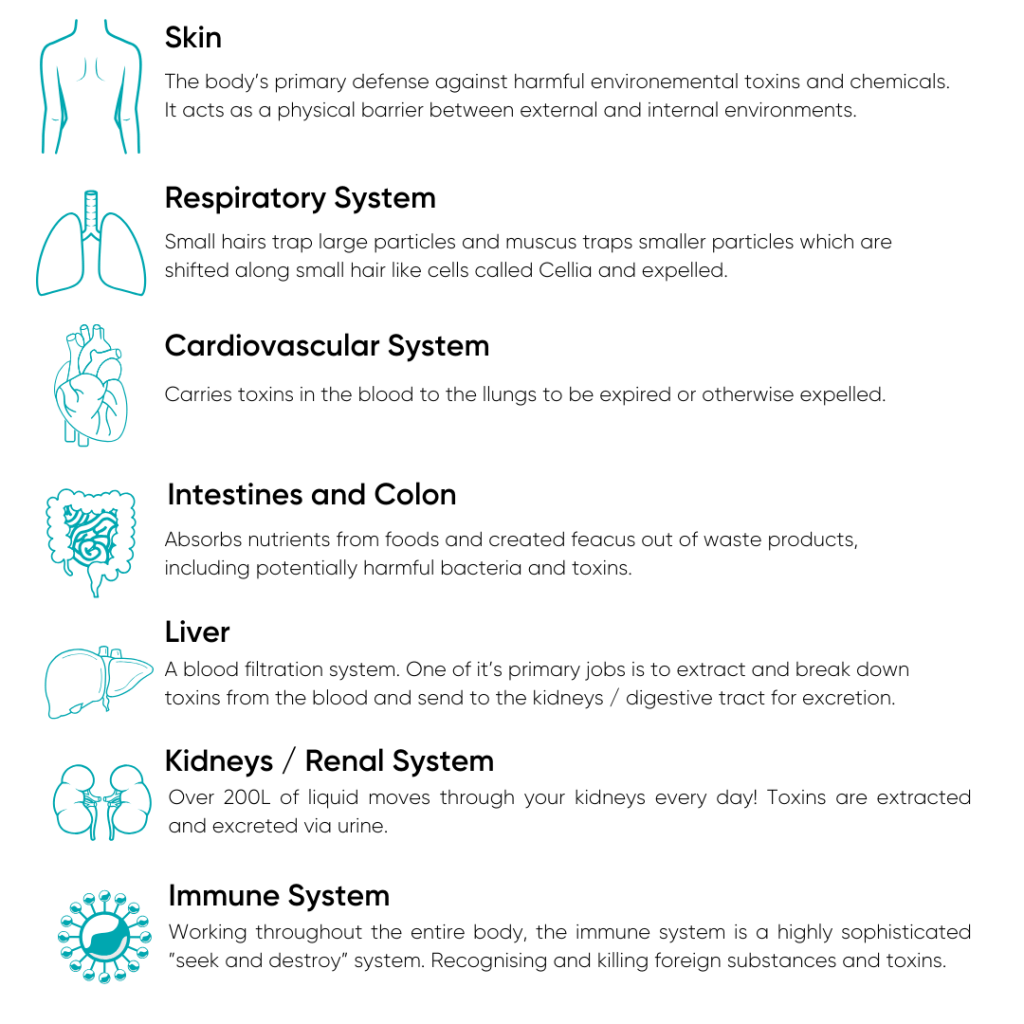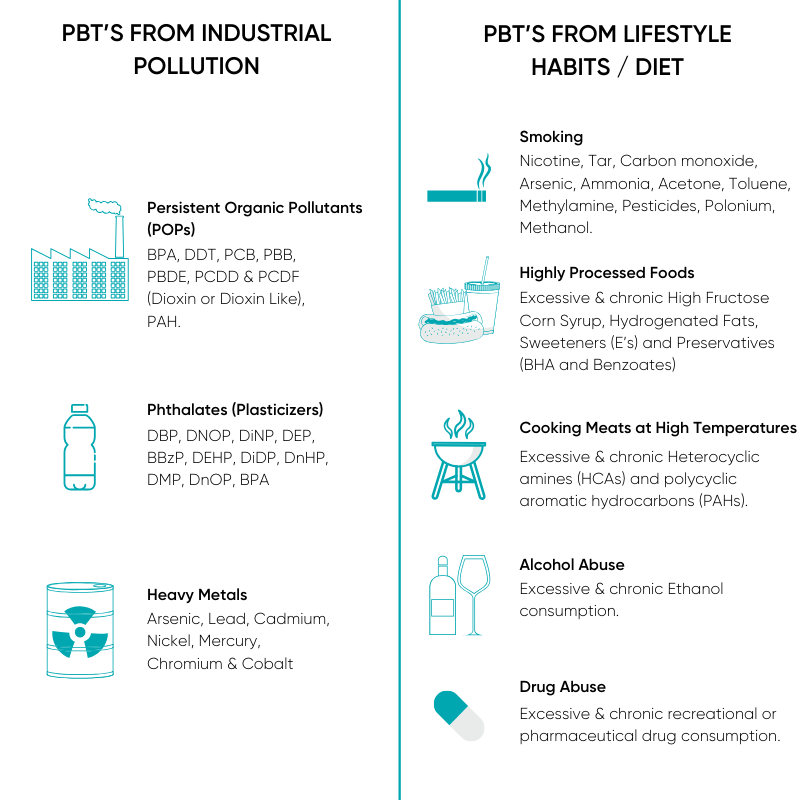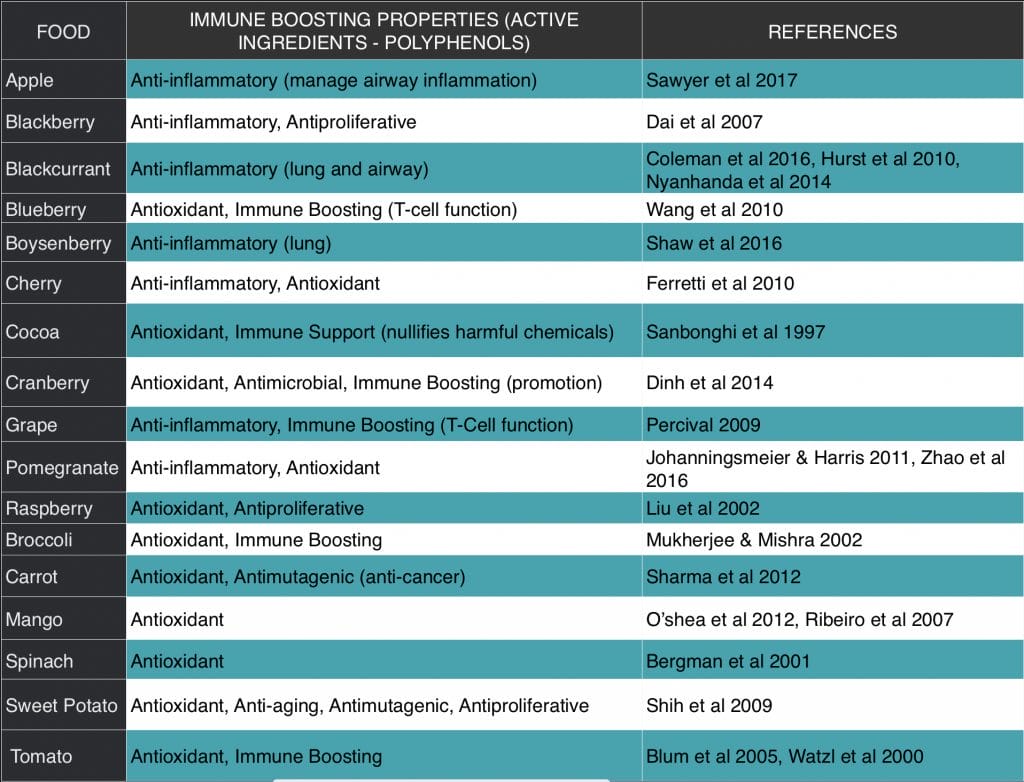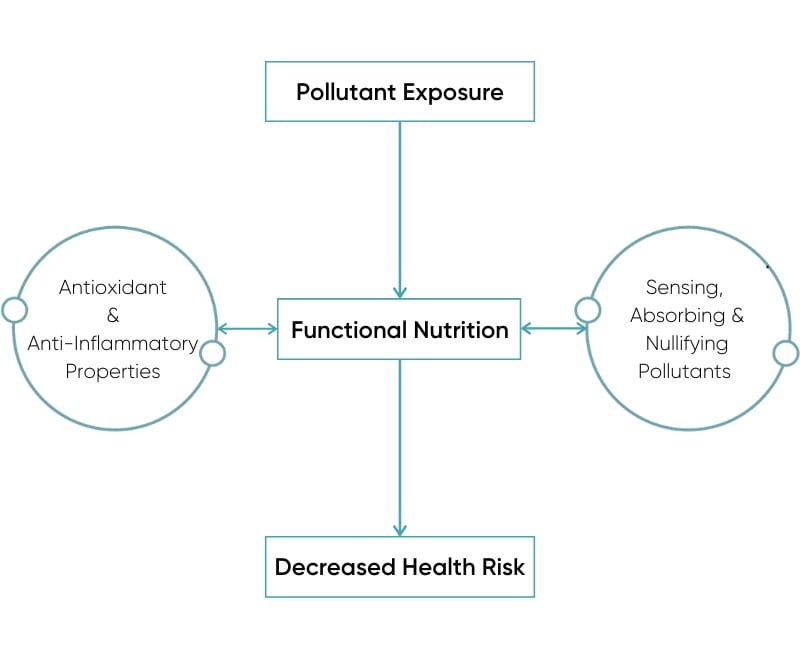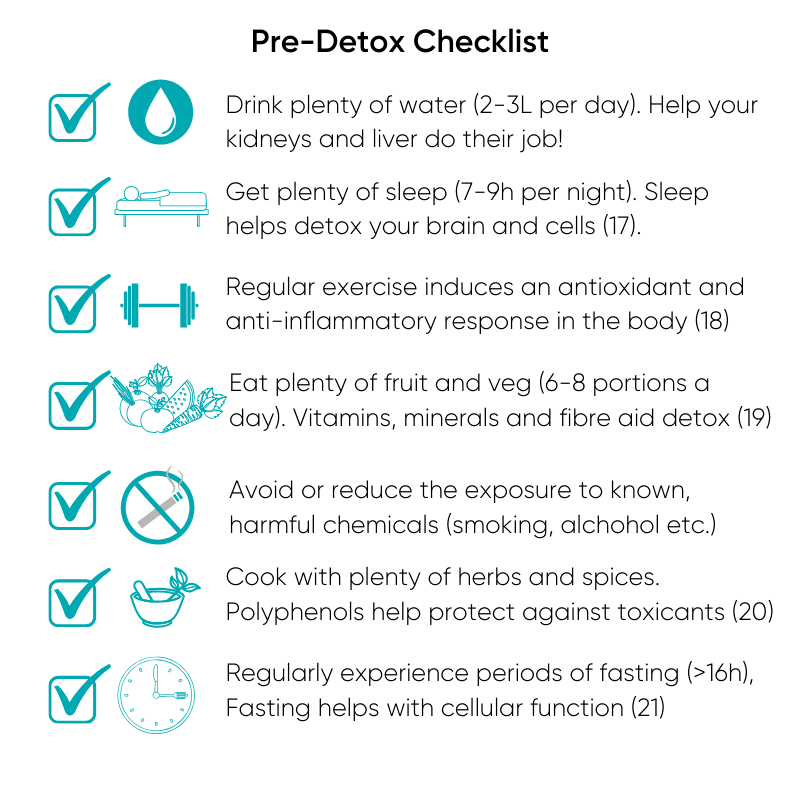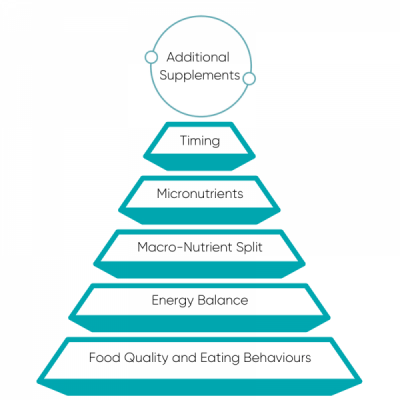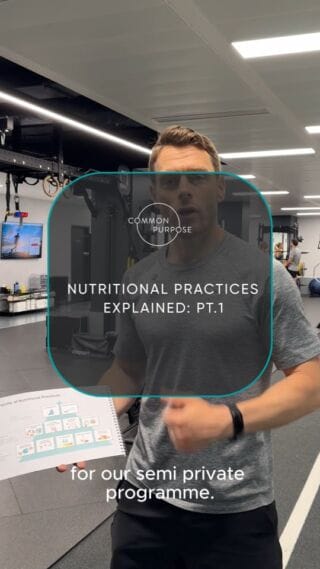Nutrition, Helping or Hindering?
The aforementioned PBT’s tend to be fat-soluble (lipophilic), so foods high in fat could potentially increase your exposure (12). Generally, the risk of toxicant exposure in meat and dairy products is higher than in vegetable matter. We are NOT advocating the boycott of meat and dairy products, however, as they provide crucial nutrients that can contribute to a healthy diet. It is important to be particularly mindful of how these types of foods are sourced and processed.
Side note: “Adipose tissue (body fat) absorbs toxicants, which temporarily protect the body, but can also increase chronic “body burden”, and is released in high doses when losing weight” (13).
Conversely, nutrition can positively influence your body’s ability to deal with exposure to PBT’s. For example, the exposure to PBT’s may increase as a result eating of certain dietary fats, whereas eating fruits and vegetables, rich in antioxidants and anti-inflammatory nutrients, may mitigate this risk.
Functional Foods to the Rescue?
The foundation of the supplemental arm in detox protocols is the use of what’s known as “functional foods”. Examples include plant extracts such as ginseng, ginger, garlic, milk thistle, echinacea etc. It’s claimed that they contain varying levels of bioactive compounds such as polyphenols, vitamins and minerals.
Certain chemical compounds have been shown to aid the chelation of heavy metals. The caveat here is that they are mostly animal studies, in which there is a dosage dilemma. Small animals which are given high doses of heavy metals (hundreds of times higher per bodyweight than would be found in humans) and are prescribed massive amounts of the bioactive compound (20-40% of their entire calorie intake in some cases!) make it difficult to translate to prescription in humans.
A small number of human studies have however shown promising uses of Selenium, Chlorella and Citrus Pectin in aiding the chelation of toxicants such as Dioxins (industrial pollutants), HCA’s & PHA’s (found in burnt meat) and certain heavy metals (Cadmium, Mercury and Lead). Here you can find a literature review table showing study design and effect sizes.
 Common Purpose Team
Common Purpose Team